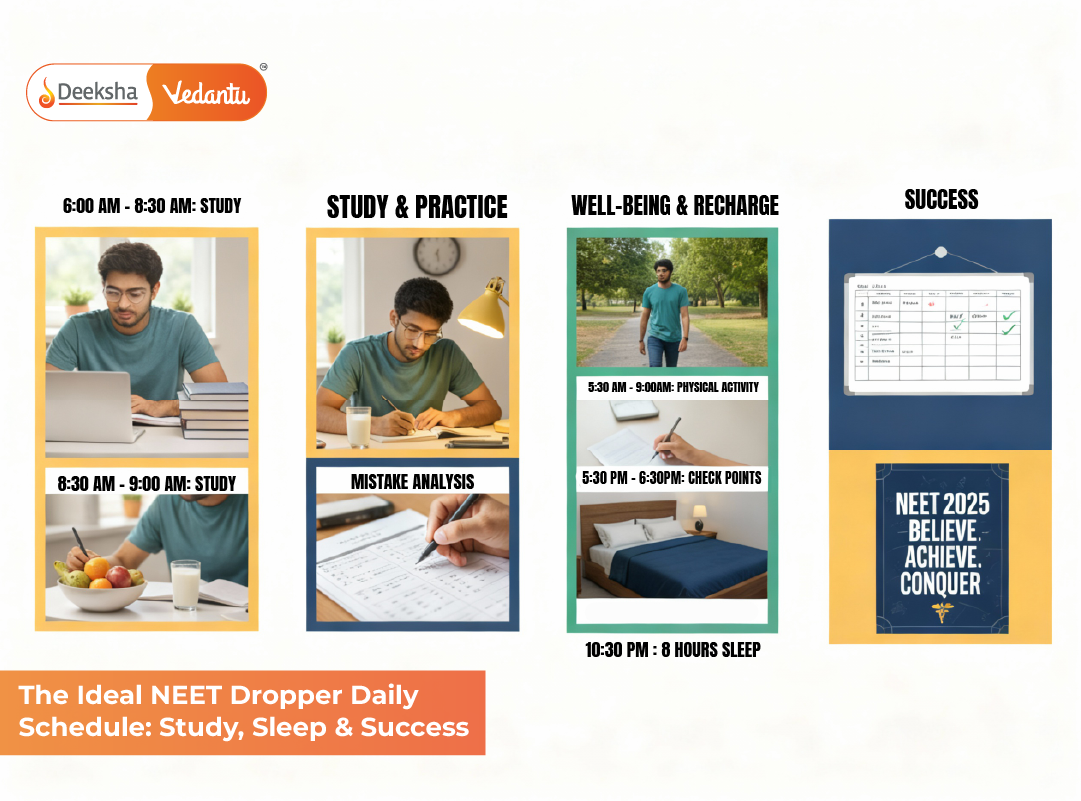Introduction
Essay writing in Kannada is a key component of the SSLC 2025 exam, and mastering it can significantly boost your score. A well-written essay not only demonstrates your proficiency in the language but also your ability to express ideas logically and creatively. Whether it’s about current affairs, a historical event, or a cultural topic, a strong Kannada essay can leave a lasting impression on your examiner.
In this guide, we’ll explore the essential tips, techniques, and structure needed to write high-scoring essays in Kannada. With consistent practice and the right approach, you can excel in this section and secure top marks in your Kannada paper. At Deeksha Vedantu, we provide students with comprehensive support, helping them sharpen their writing skills and effectively organize their thoughts to craft essays that stand out.
Why Essay Writing Matters in SSLC Kannada
Essay writing is a significant part of the Kannada paper in the SSLC exam, and its importance cannot be overstated. It’s an opportunity for students to showcase their language proficiency, creativity, and critical thinking abilities. Here’s why essay writing is essential for scoring high in the Kannada paper:
1. Importance of Essays in the Overall Kannada Paper Score
The essay section usually carries a substantial weight in your Kannada paper, often accounting for a large portion of your total score. A well-structured, detailed essay can easily fetch you high marks and boost your overall performance.
2. How Essay Writing Reflects Language Proficiency and Creative Thinking
A well-written essay shows that you have a strong command over the language, an ability to articulate your thoughts clearly, and a creative flair in presenting ideas. It also reflects your vocabulary range, sentence structure, and understanding of grammar, which are all evaluated in the SSLC exam.
3. The Weightage of Essays in SSLC 2025 Kannada Paper
The essay section typically holds a significant portion of the total marks in the Kannada paper. Writing a compelling, well-organized essay can set you apart and make a noticeable difference in your final score. Proper preparation and practice are key to mastering this section.
Key Elements of a High-Scoring Kannada Essay
Writing a high-scoring Kannada essay requires a clear understanding of structure, language, and presentation. Here are the key elements that make up a strong essay and ensure that your writing stands out to the examiner:
1. Clear Structure and Organization
A well-organized essay is easy to follow and provides a clear flow of ideas. Structuring your essay into three main parts — an introduction, body, and conclusion — is essential to ensure coherence and clarity.
- Introduction: This is where you introduce the topic, provide some background, and state your thesis or main argument. Your introduction should be engaging and make the reader want to continue reading.
- Body: The body of your essay should contain several paragraphs that develop your argument, provide examples, and explain your ideas in detail. Each paragraph should focus on a specific point related to the topic.
- Conclusion: The conclusion should summarize the main points and restate the thesis in light of the arguments made. It’s your final opportunity to leave a lasting impression.
Tip: Ensure your paragraphs are balanced in length, with each one elaborating on a single idea clearly and logically.
2. Strong Introduction
The introduction is the first impression you make on your examiner, so it’s important to start strong. Your goal is to grab the reader’s attention and set the tone for the rest of your essay.
- How to Capture the Reader’s Attention: Start with a question, a quote, or an interesting fact related to the topic.
- Framing the Topic Effectively: Clearly outline the main point of the essay and introduce your viewpoint. Make sure the introduction is not too long — it should provide just enough information to lead into the body of the essay.
Tip: Avoid starting your essay with generic phrases like “This essay will discuss…” Instead, be creative in drawing the reader in.
3. Well-Developed Body Paragraphs
Each body paragraph should elaborate on a single idea or argument. It’s important to support your points with relevant examples, evidence, or personal experiences that make the content more engaging and informative.
- Developing Ideas: Start each paragraph with a clear topic sentence that introduces the main point.
- Avoiding Off-Topic Content: Stay focused on the central theme of the essay. If you stray too far off topic, you risk confusing the reader and losing marks.
Tip: Use transitions (like “firstly,” “in addition,” or “as a result”) to guide the reader from one paragraph to the next.
4. Effective Conclusion
The conclusion is the last part of your essay, and it’s where you tie everything together. A strong conclusion will summarize your main points and reinforce your thesis. It should leave the reader with a clear understanding of your perspective.
- Summarizing Key Points: Briefly restate the arguments you’ve made, without introducing new information.
- Leaving a Lasting Impression: End with a thought-provoking statement, a call to action, or a prediction, depending on the type of essay.
Tip: Avoid making the conclusion too long — keep it concise and focused on summarizing the essay’s core message.
5. Language and Vocabulary
Your essay’s language should be formal, clear, and concise. The use of appropriate vocabulary and grammar can elevate your writing and help you score higher.
- Using Appropriate Words and Phrases: Use words that are specific to the topic and avoid repetition. Make sure the language reflects your understanding of the subject.
- Ensuring Grammar Accuracy: Pay close attention to sentence structure, verb tense, and punctuation. Mistakes here can detract from the overall quality of your essay.
Tip: Regularly read Kannada literature, newspapers, and essays to expand your vocabulary and improve your writing style.
Tips for Writing Impressive Kannada Essays
Writing a high-scoring Kannada essay involves more than just understanding the structure and language; it’s about making your content engaging, clear, and impactful. Here are some tips to help you take your essay-writing skills to the next level and impress your examiners:
1. Choose a Relevant and Interesting Topic
Choosing the right essay topic is critical to crafting a compelling and focused essay. Opt for a topic that you can discuss in detail and one that interests you. A relevant topic allows you to present your ideas confidently and with passion.
- Tip: If the exam provides a list of topics, select one that you feel comfortable with and can elaborate on. Avoid choosing a topic you’re unfamiliar with, as it can result in vague or underdeveloped arguments.
2. Brainstorm Before Writing
Before you begin writing, take a few minutes to brainstorm and jot down key points and ideas that you want to include in your essay. This practice will help you organize your thoughts and ensure you don’t miss important details.
- Tip: Create a brief outline for your essay, listing the points you will cover in each paragraph. This will help maintain the flow and structure of your essay.
3. Stick to the Word Limit
Maintaining the right length for your essay is important. Exceeding the word limit can waste valuable time and may result in unnecessary details, while writing too briefly may cause you to miss important points.
- Tip: Practice writing essays with a timer during your preparation to get comfortable with the word limit. Aim for a concise yet informative approach to answering the essay prompt.
4. Proofread for Grammar and Spelling Errors
Grammar and spelling errors can detract from the quality of your essay. After writing, take a few minutes to proofread your work for any mistakes, whether it’s in sentence construction, punctuation, or word choice.
- Tip: Pay attention to common mistakes in Kannada, such as incorrect verb forms or incorrect spelling. Proofreading helps you catch such errors before submitting your paper.
5. Use Paragraph Breaks and Transitions
A well-organized essay is easy to read and follow. Use paragraph breaks to separate your ideas and transitions (e.g., “firstly,” “on the other hand,” “as a result”) to guide the reader through your essay smoothly.
- Tip: Don’t overwhelm your reader with long paragraphs. Keep each paragraph focused on a single idea or argument to maintain clarity and readability.
Common Mistakes to Avoid in Kannada Essays
While writing an essay in Kannada can seem straightforward, many students make common mistakes that can reduce their score. By being aware of these pitfalls and actively avoiding them, you can ensure that your essays are well-received and highly scored by the examiner. Here are some common mistakes to watch out for:
1. Overloading with Unnecessary Details
Adding excessive information can make your essay cluttered and difficult to follow. Avoid including too many irrelevant examples or overly detailed explanations that do not directly contribute to your central argument.
- Tip: Stick to the main points and elaborate only on those that support your thesis or main idea. Keep your essay concise and to the point, focusing on quality over quantity.
2. Writing Lengthy Paragraphs Without Coherence
Long paragraphs without proper organization can make your essay difficult to read. If a paragraph is too long, it becomes hard for the examiner to follow your ideas, leading to a decrease in the overall clarity of your essay.
- Tip: Break down large chunks of writing into smaller, focused paragraphs, each dedicated to a specific idea. This ensures better readability and flow in your essay.
3. Writing Off-Topic or Ignoring the Question
Straying from the essay topic or misinterpreting the question is one of the easiest ways to lose marks. Ensure that you answer the question directly and stay on topic throughout your essay.
- Tip: Read the essay question carefully and underline key points. Always refer back to the question to ensure that every paragraph you write is relevant and supports your argument.
4. Ignoring the Question’s Subsections
Some essay prompts may have specific subsections or instructions. Ignoring these parts of the question can lead to incomplete answers and loss of marks.
- Tip: Pay close attention to every part of the question and ensure you address each component in your essay. If the question asks for both a description and analysis, make sure to do both.
5. Not Following the Proper Format for Essays
Not adhering to a structured format can make your essay look disorganized. Make sure you have a proper introduction, body, and conclusion. Essays that lack clear organization may appear rushed and incomplete.
- Tip: Start with a clear introduction, develop your points systematically in the body, and finish with a concise conclusion. This will make your essay flow logically and be easier for the examiner to follow.
FAQs
1. How do I choose the right essay topic in Kannada?
Choose a topic that you are comfortable with and one that allows you to discuss multiple points. It should be something you can elaborate on with examples and details. If the question allows a choice, pick a topic that interests you and fits well with your knowledge.
2. Can I write in a conversational tone for an essay?
While your essay should be engaging, it is important to maintain a formal tone. Avoid overly casual language, slang, or contractions. A balanced, formal tone is ideal for SSLC essays, and it helps in presenting your ideas clearly and professionally.
3. How long should my Kannada essay be in SSLC 2025?
Typically, your Kannada essay should be between 250 to 300 words, but this can vary based on the exam guidelines. Focus on writing a well-organized essay within the word limit, providing enough depth and details without going off-topic.
4. How can I improve my grammar and spelling in Kannada?
To improve your grammar and spelling, practice writing regularly and review your work for common mistakes. Read Kannada books, articles, and newspapers to familiarize yourself with correct grammar usage and vocabulary. Additionally, practicing Kannada writing through exercises and daily prompts can help improve your skills.
5. What should I include in the conclusion of my Kannada essay?
Your conclusion should briefly summarize the main points discussed in your essay and reaffirm your stance or viewpoint. You can end with a thought-provoking idea, a call to action, or a reflective statement that ties the essay together and leaves a lasting impression on the examiner.
Conclusion: Mastering the Art of Kannada Essay Writing for SSLC 2025
Writing high-scoring essays in Kannada is a skill that can be developed with practice, organization, and attention to detail. By following a clear structure, maintaining a formal tone, and focusing on coherence, you can ensure your essay will impress the examiner. Remember, essay writing is not just about filling the page with words; it’s about expressing your ideas logically, using appropriate language, and engaging the reader from start to finish.
At Deeksha Vedantu, we focus on helping students perfect their Kannada essay writing through structured practice, feedback, and tips on improving language proficiency. With consistent effort and the right strategies, writing high-scoring essays in Kannada becomes an achievable goal.
So, start practicing now, keep refining your writing skills, and approach your SSLC 2025 Kannada essay with confidence. With these techniques, you’ll be on your way to scoring full marks and making a lasting impression on your examiner.
Table of Contents










Get Social